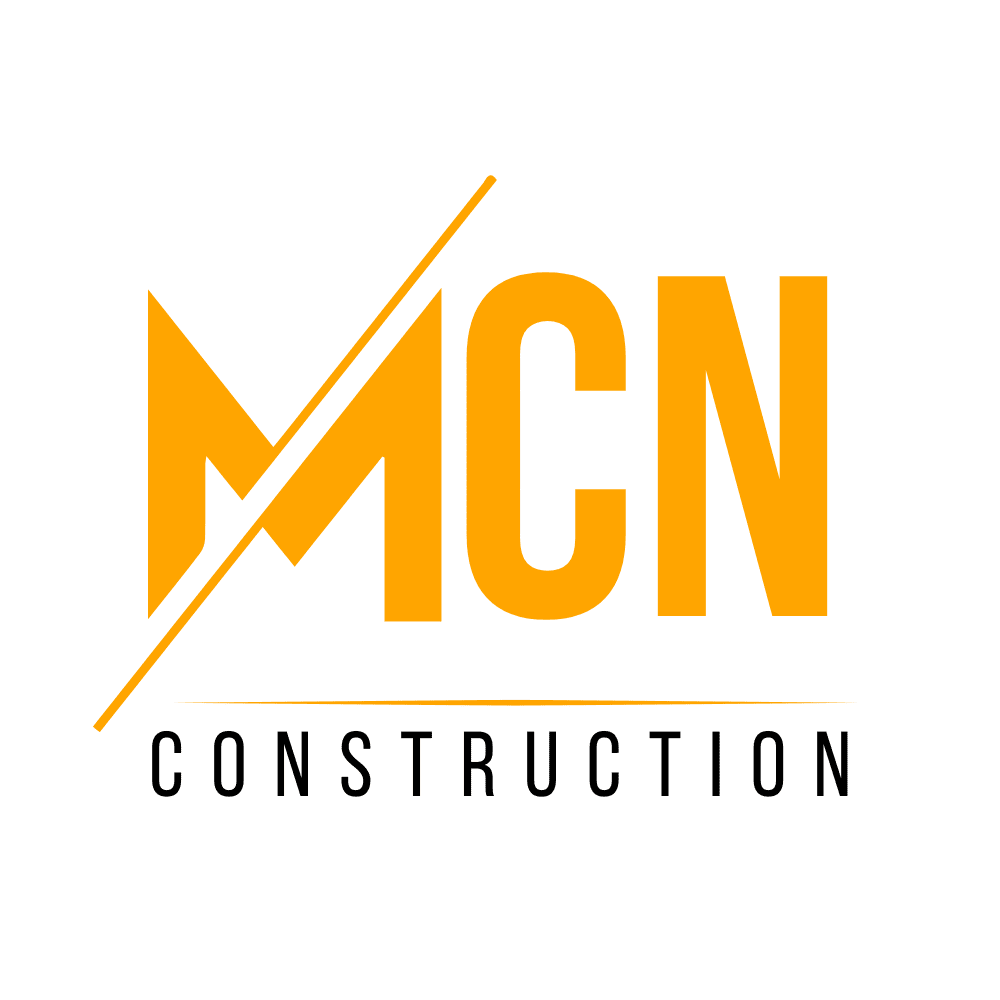Introduction
Welcome to the world of commercial construction, where innovation meets necessity! Whether you’re looking to build a sleek new office building or revamp an existing retail space, the landscape of commercial building projects is evolving faster than a kid on a sugar rush. With trends like sustainable building practices and smart technology integration, it’s no wonder that industry professionals are buzzing with excitement.
As we dive into the nitty-gritty of what’s reshaping the realm of industrial construction, you’ll discover how commercial construction services are not just about putting up walls and roofs anymore. They’re about creating spaces that are functional, sustainable, and downright impressive. Think of it this way: if commercial construction were a movie, it would be an action-packed blockbuster starring cutting-edge technology and eco-friendly practices!
From office building construction that promotes productivity to innovative approaches in retail construction, this post will explore seven key trends that are currently reshaping projects across Canada. So grab your hard hat and let’s get started!
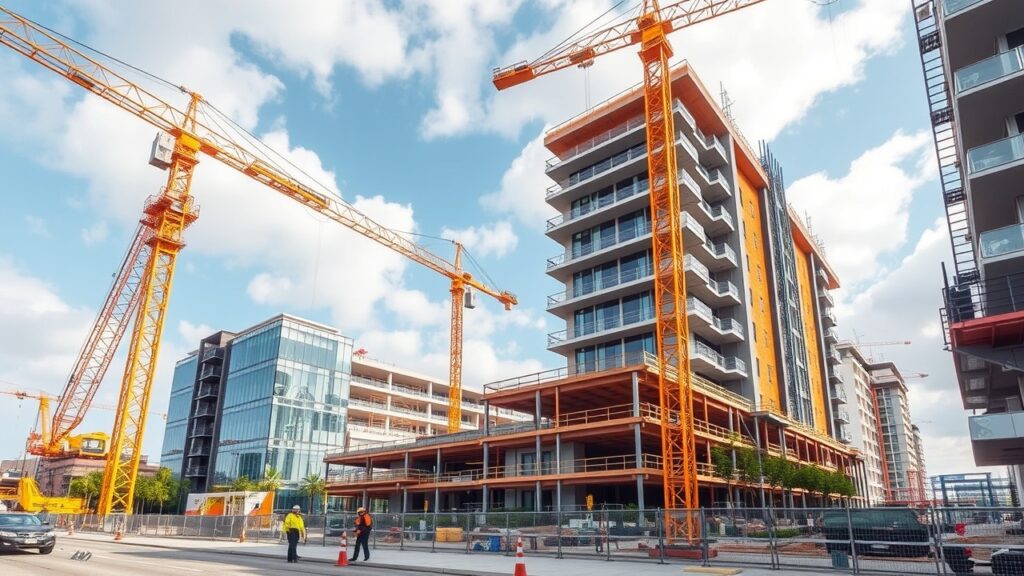
Did you know? The commercial construction industry is increasingly focusing on sustainability and smart technologies, making it more efficient and environmentally friendly than ever before!
Table of Contents
1. Sustainable Building Practices
When it comes to commercial construction, sustainable building practices are no longer just a trend; they’re a necessity. Think of it as the cool kid in school who’s not only popular but also smart and kind everyone wants to be associated with them!
Here are some key components that make up the backbone of sustainable practices in commercial building projects:
- Green Building Strategies: These strategies focus on minimizing the environmental impact of construction through energy efficiency, water conservation, and sustainable materials. It’s like giving Mother Nature a big hug while still turning a profit!
- LEED Certification in Canada: Achieving Leadership in Energy and Environmental Design (LEED) certification is like getting a gold star for your eco-friendly efforts. It showcases your commitment to sustainability, making your project more attractive to tenants and investors alike.
- Energy-Efficient Lighting Solutions: With advancements in technology, energy-efficient lighting has become more accessible. Think of LED lights as the superheroes of the lighting world, saving energy and money while brightening up your office or retail space.
Did you know that buildings account for about 40% of global energy consumption? By adopting sustainable building practices, we can significantly reduce this number while enhancing the value of commercial properties.
The Benefits
Sustainable building isn’t just about saving the planet; it’s also good business. Here’s why:
- Cost Savings: Implementing green strategies can lead to significant savings on energy bills over time. Who doesn’t love a little extra cash in their pocket?
- Attracting Tenants: More businesses are looking for spaces that reflect their values, including sustainability. A green-certified building can be a major selling point!
- Compliance with Regulations: As legislation evolves, staying ahead with sustainable practices ensures compliance with building codes and regulations Canada is increasingly enforcing.
A Common Misconception
A lot of folks think that going green means breaking the bank. Not true! While there might be an upfront cost, many sustainable options pay for themselves over time through lower operational costs.
If you’re considering a new project or renovation, make sure to consult with a commercial general contractor experienced in these innovative trends. They’ll help you navigate everything from pre-construction planning to compliance with safety standards in construction sites in Canada.
Sustainable building practices are reshaping the landscape of commercial construction projects today; don’t get left behind! Embrace these strategies not just for environmental reasons but also for long-term profitability and tenant satisfaction.
2. Smart Building Technology Integration
Welcome to the future of commercial construction, where buildings are not just structures but intelligent entities that enhance our daily lives! Imagine walking into a commercial space that knows your preferences, adjusts lighting based on the time of day, and optimizes energy usage all while you sip your artisanal coffee. This is the magic of smart building technology integration!
As we dive into this trend, let’s explore how smart systems are revolutionizing commercial building projects:
- Advantages of Smart Systems in Commercial Spaces:
- Energy Efficiency: Smart buildings utilize sensors and automated systems to manage energy consumption, leading to lower utility bills and a reduced carbon footprint.
- Enhanced Comfort: With integrated HVAC systems, lighting control, and climate management, occupants experience optimal comfort tailored to their needs.
- Data-Driven Decisions: Real-time data collection allows for informed decisions regarding maintenance and operational efficiency.
- HVAC and Electrical Contracting Services for Smart Buildings: The backbone of any smart building is its HVAC and electrical systems. These systems must be designed for flexibility and scalability. Here’s how they contribute to smart technology:
- Smart Thermostats: These devices learn user behaviour over time, adjusting temperatures automatically to reduce energy waste.
- Integrated Lighting Solutions: Energy-efficient lighting can be controlled remotely or adjusted based on occupancy sensors.
- Advanced Security Systems: Smart surveillance cameras and access controls ensure safety while providing valuable data analytics.
Key Takeaway: Integrating smart technology not only enhances operational efficiency but also aligns with sustainable building practices, making it a win-win for developers and occupants alike!
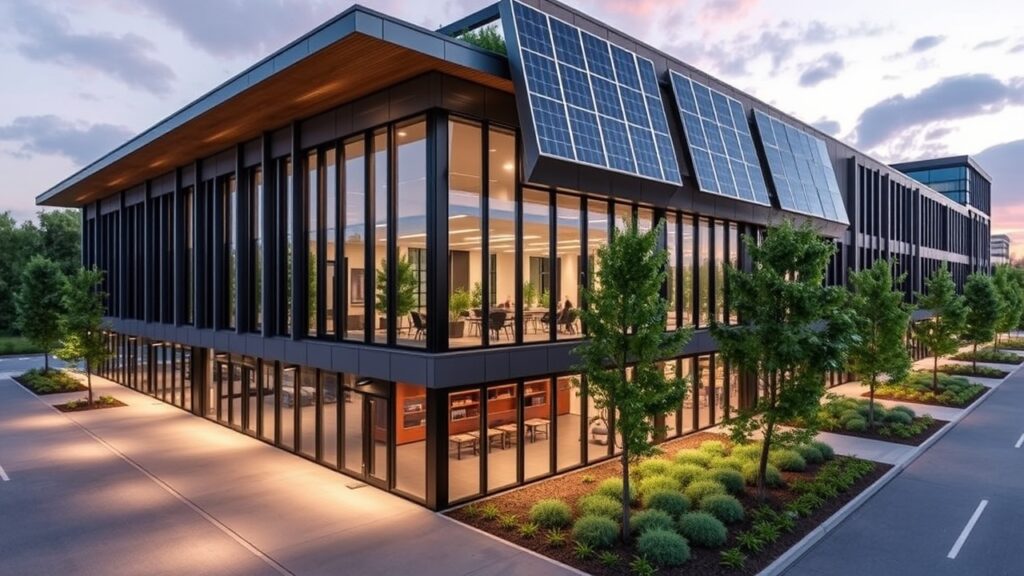
Navigating the waters of smart building technology can be daunting for many commercial general contractors. However, understanding the integration process from pre-construction planning to compliance with local building codes is crucial. Embracing these technologies not only positions your projects at the forefront of innovation but also attracts tenants looking for modern amenities in high-rise office buildings or retail spaces.
If you’re pondering over how to incorporate these advanced technologies into your next project or considering a commercial renovation that embraces sustainability through smart solutions, now’s the time! The future is bright (and energy-efficient), so let’s get started on transforming those concrete dreams into reality!
3. Pre-Construction Planning Innovations
In the fast-paced world of commercial construction, pre-construction planning has evolved from a mere checklist to a sophisticated art form. Think of it as the blueprint for success; without it, you’re just winging it, and we all know how that usually ends up!
Let’s dive into some of the coolest innovations in pre-construction planning that are shaking up commercial building projects:
The Role of BIM Technology in Project Management
BIM, or Building Information Modelling, is like having a crystal ball for your construction project. This tech marvel allows teams to visualize and simulate every aspect of a project before breaking ground. Imagine being able to walk through your future office building construction or retail space in a virtual environment. Pretty neat, right?
Key Benefits of BIM:
- Improved collaboration among stakeholders.
- Enhanced accuracy in cost estimation for construction projects.
- Better compliance with building codes and regulations in Canada.
Cost Estimation Techniques for Commercial Projects
No one likes surprises when it comes to budgets! Innovative cost estimation techniques are now leveraging big data and AI to provide more accurate forecasts. This means no more last-minute panic over budget overruns. By analyzing historical data and current market trends, commercial general contractors can offer precise estimates that keep projects on track financially.
“Accurate cost estimation is not just about crunching numbers; it’s about strategic foresight.”
Collaboration Tools for Enhanced Communication
The days of endless email chains are over! Modern collaboration tools allow teams to communicate seamlessly throughout the pre-construction phase. Whether it’s sharing plans for tenant improvement projects or discussing structural engineering in commercial projects, these platforms ensure everyone is on the same page literally!
Sustainable Practices Incorporated Early On
Pre-construction planning is also where sustainable building practices take root. By integrating green building strategies from the get-go, teams can ensure that energy-efficient lighting solutions and HVAC systems are part of the initial design rather than an afterthought. This proactive approach not only helps in achieving LEED certification in Canada but also enhances the overall value of the project.
Avoiding Common Misconceptions
A common misconception is that pre-construction planning is just about scheduling and budgeting. In reality, it’s about creating a holistic vision for the project that includes stakeholder input, regulatory compliance, and innovative design elements. Skipping this step can lead to costly mistakes down the line!
In summary, investing time in innovative pre-construction planning not only streamlines project management but also sets the stage for successful outcomes in commercial renovation and new builds alike. So next time you think about launching a new commercial real estate development or office building construction project, remember: good things come to those who plan!
4. Retrofitting Older Buildings for Modern Use
In the world of commercial construction, retrofitting older buildings is like giving a vintage car a sleek new paint job and a high-tech engine. It’s about preserving history while embracing the future! With urban areas bustling and real estate prices soaring, many developers are looking to breathe new life into existing structures rather than tearing them down. But how do they do it?
First, let’s talk about the challenges that come with retrofitting. Older buildings often have outdated layouts and inefficient systems and may not comply with modern building codes. This can make renovation projects feel like trying to fit a square peg in a round hole. However, innovative solutions are popping up to tackle these issues head-on:
- Structural Engineering Innovations: Modern structural engineering techniques can help reinforce aging frameworks while maintaining their historical charm.
- Smart Technology Integration: Upgrading HVAC systems and electrical contracting services ensures that these buildings meet energy efficiency standards without compromising on comfort.
- Facade Improvements: A fresh facade installation can dramatically enhance curb appeal while improving insulation and energy efficiency.
A key aspect of retrofitting is ensuring compliance with accessibility standards in Canadian buildings. This means not only adhering to regulations but also creating spaces that are welcoming for everyone. Think of it as turning an old schoolhouse into a vibrant community center accessible ramps, wider doorways, and smart signage make all the difference!
Did You Know? Retrofitted buildings can achieve LEED certification in Canada by implementing energy-efficient lighting solutions and sustainable building practices.
The Benefits of Retrofitting
The benefits of retrofitting older buildings extend beyond just aesthetics or compliance; they also contribute to sustainability efforts within commercial real estate development:
- Cost-Effectiveness: Often, it’s cheaper to retrofit than to construct new buildings from scratch.
- Cultural Preservation: Maintaining historical architecture adds character to urban landscapes and fosters community pride.
- Sustainability Goals: Reducing waste by reusing materials aligns with green building strategies.
A Common Misconception
A common misconception is that retrofitting is only for residential properties. In reality, many commercial building projects are seeing the light (and money) saved through savvy renovations! Whether it’s an office building construction or retail construction project, there’s potential everywhere.
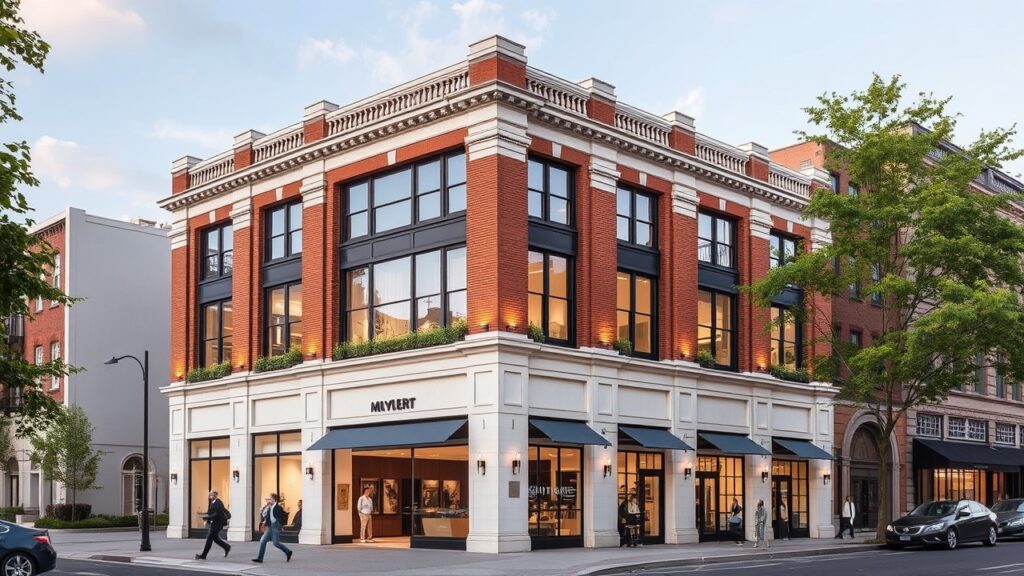
If you’re considering a renovation project or working with a commercial general contractor on a tenant improvement project, remember: blending old with new not only revitalizes spaces but also aligns perfectly with current urban development trends in Canadian cities. So roll up your sleeves and get ready to transform those vintage gems into modern marvels!
5. Mixed-Use Development Projects in Urban Areas
Imagine a world where you can grab your morning coffee, attend a business meeting, and hit the gym all without stepping foot outside your neighborhood. Welcome to the era of mixed-use development projects! These innovative spaces are popping up in urban areas like popcorn in a microwave, blending residential, commercial, and recreational spaces into one harmonious hub.
Mixed-use developments are not just trendy; they’re revolutionizing commercial construction by maximizing land use and enhancing community engagement. Think of them as the Swiss Army knives of real estate versatile and packed with functionality!
The Rise of Multi-Purpose Spaces in Commercial Real Estate Development
In recent years, urban planners have embraced this trend with open arms. By integrating various types of spaces into a single project, developers are meeting the growing demand for convenience and accessibility. Here’s why mixed-use projects are gaining momentum:
- Diverse Revenue Streams: Combining retail, office, and residential spaces allows developers to tap into multiple income sources.
- Enhanced Community Interaction: These developments create vibrant neighbourhoods where people can live, work, and play, reducing the need for long commutes.
- Sustainable Practices: By consolidating services and amenities in one location, mixed-use projects promote energy efficiency and reduce carbon footprints.
Impact on Local Communities and Business Growth
The benefits extend beyond just construction; local communities thrive when these developments take root. Here’s how:
- Job Creation: Mixed-use developments often lead to new businesses opening up shop, creating jobs for residents.
- Increased Foot Traffic: With shops and offices co-located with homes, businesses see more customers walking through their doors.
- Cultural Enrichment: These spaces often feature community art installations or event spaces that foster local culture.
Key Takeaway:
The rise of mixed-use development projects is reshaping urban landscapes by creating dynamic environments that cater to modern lifestyles while promoting sustainability. If you’re considering a commercial building project in Canada, this trend could be your ticket to success!
6. Safety Standards and Regulations in Construction Sites Canada
When it comes to commercial construction, safety isn’t just a checkbox on a list; it’s the foundation upon which every successful project stands. Think of it as the sturdy base of a skyscraper; without it, everything else is at risk of crumbling.
In Canada, adhering to safety standards and regulations is not just about compliance; it’s about creating a culture of safety that protects workers and ensures project success. Here’s what you need to know:
- Importance of Fire Safety Systems: In commercial buildings, fire safety systems are non-negotiable. From alarm systems to sprinkler installations, these measures safeguard lives and assets alike. Did you know that buildings equipped with robust fire safety systems can reduce fire-related fatalities by up to 80%? That’s a statistic worth building around!
- Navigating Building Codes and Regulations: The world of building codes can feel like deciphering ancient hieroglyphs daunting but essential! In Canada, these codes ensure that all commercial building projects meet minimum safety standards. Whether you’re diving into high-rise building construction or tackling tenant improvement projects, understanding local regulations is key.
Key Takeaway: Compliance with safety standards not only protects workers but also enhances the overall reputation of your business in the competitive landscape of commercial construction.
Moreover, legislative changes affecting Canadian builders can shift the landscape overnight. Staying informed about new regulations helps avoid costly delays and fines. A proactive approach in securing permits and licenses can save time and headaches down the line.
Finally, don’t overlook the importance of engaging with qualified professionals like a reputable commercial general contractor. They bring invaluable expertise in navigating safety protocols and ensuring compliance throughout the lifecycle of your project.
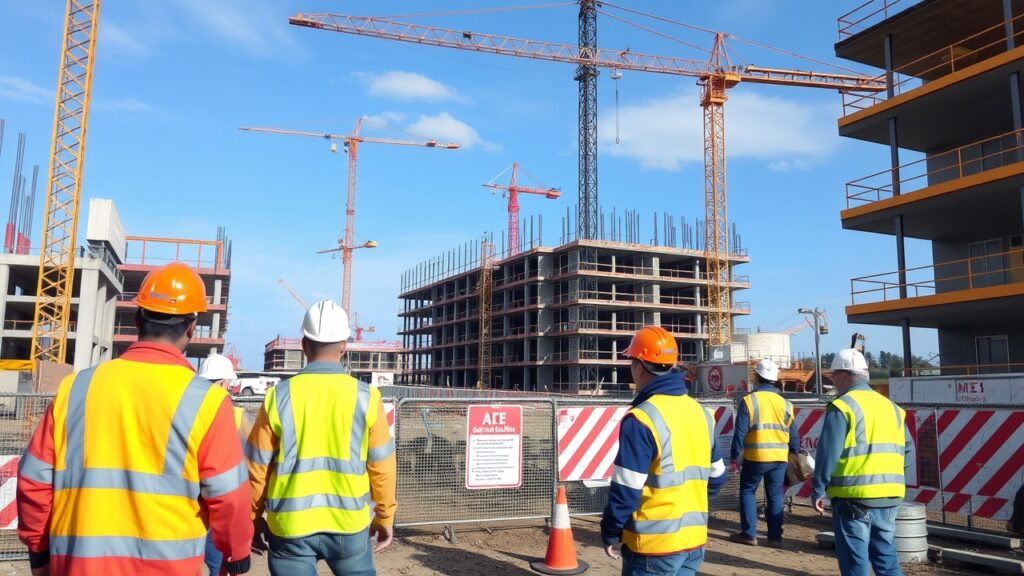
7. Collaborations and Partnerships with Local Subcontractors
When it comes to commercial construction, think of local subcontractors as your trusty sidekicks. They know the lay of the land, the quirks of local building codes, and how to navigate the intricacies of commercial building projects like pros. Partnering with them can be a game-changer in your project management strategy!
Here’s why collaborating with local subcontractors is not just a good idea but a smart move:
- Local Knowledge and Expertise: Local subcontractors bring invaluable insights about regional materials, labour costs, and even weather patterns that could affect your timeline. Their experience can help you avoid pitfalls that might trip up an outsider.
- Sourcing Materials: Why ship materials from halfway across the country when you can source them nearby? This not only supports local businesses but also reduces transportation costs and environmental impact, aligning perfectly with sustainable building practices.
- Streamlined Communication: Having teams that are familiar with each other enhances communication. This synergy can lead to quicker decision-making and fewer misunderstandings on-site.
- Compliance with Local Regulations: Navigating building codes and regulations in Canada can feel like deciphering hieroglyphics. Local subcontractors are well-versed in these requirements, ensuring that your project stays compliant and avoids costly delays.
Key Takeaway: Collaborating with local subcontractors not only enhances your project’s efficiency but also fosters community ties, making it a win-win for everyone involved!
A Case Study: Success in Action
Consider a recent office building construction project where McNedra Construction partnered with local concrete contractors for commercial buildings in Canada. By leveraging their expertise, we were able to implement innovative structural engineering solutions that improved both safety standards and aesthetic appeal.
A Common Misconception
A lot of developers think they need to hire big-name contractors for quality work. However, smaller, local subcontractors often provide tailored services that larger firms may overlook. They are just as capable, and sometimes more so, when it comes to delivering high-quality results on time and within budget.
If you’re embarking on a commercial renovation or new construction project, consider reaching out to local subcontractors early in your pre-construction planning phase. Their insights could save you time, money, and headaches down the road!
Conclusion
As we wrap up our tour through the ever-evolving landscape of commercial construction, it’s clear that innovation is not just a buzzword; it’s the lifeblood of the industry. From sustainable building practices to smart technology integration, these trends are not only reshaping how we construct buildings but also how we interact with them.
The push for green building strategies and LEED certification in Canada means that future commercial building projects will not only be aesthetically pleasing but also environmentally responsible. This shift is paving the way for a new generation of commercial renovation and development that prioritizes sustainability.
Smart building technology is transforming traditional spaces into interactive environments, enhancing operational efficiency and tenant satisfaction. Imagine walking into an office where the lighting adjusts to your mood, or where HVAC systems learn your preferences over time. This isn’t science fiction; it’s happening now!
Key Takeaway: Embracing these innovative trends can lead to significant improvements in project management in construction, from pre-construction planning to final inspections.
Moreover, as cities grow and evolve, mixed-use development projects are becoming essential in urban areas. These projects foster community engagement and economic growth by blending residential, commercial, and recreational spaces. They represent a shift towards a more integrated approach to urban living.
However, it’s important not to overlook the foundational aspects of construction safety standards and compliance with building codes, which remain critical. Ensuring that all commercial construction services adhere to these regulations protects both workers and future occupants.
The collaboration with local subcontractors is another trend worth noting. By leveraging local expertise, developers can navigate challenges more effectively while also supporting the community. This partnership model not only enhances project outcomes but also fosters trust within the local economy.
In conclusion, navigating the world of commercial construction today requires a keen eye on emerging trends while maintaining a strong foundation in established practices. Whether you’re involved in office building construction or large-scale institutional projects, staying informed about these innovations will position you ahead of the curve.
If you’re ready to take your next project from concept to completion with these innovative strategies in mind, reach out! McNedra Construction is here to bring your vision to life while ensuring compliance with all necessary regulations and standards.
